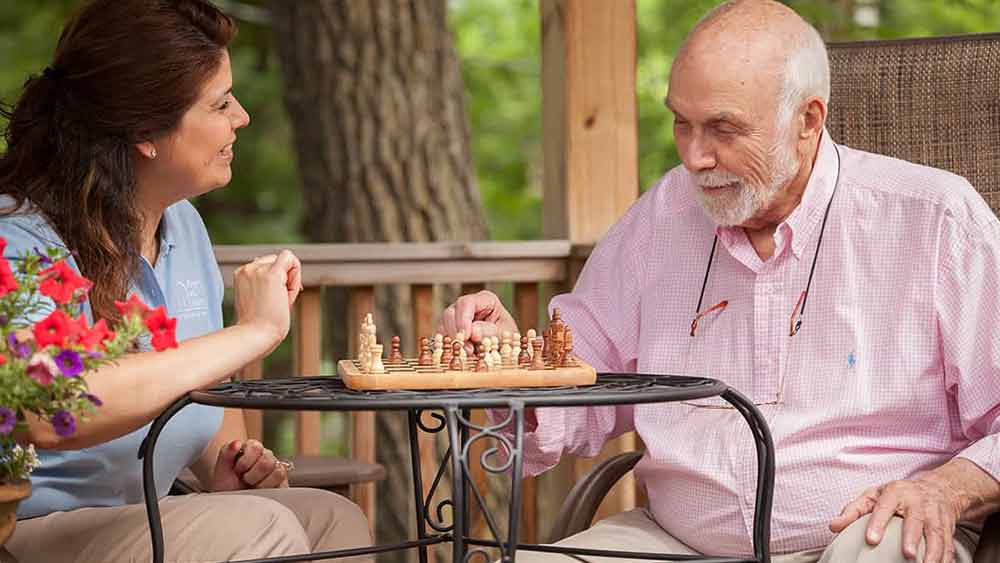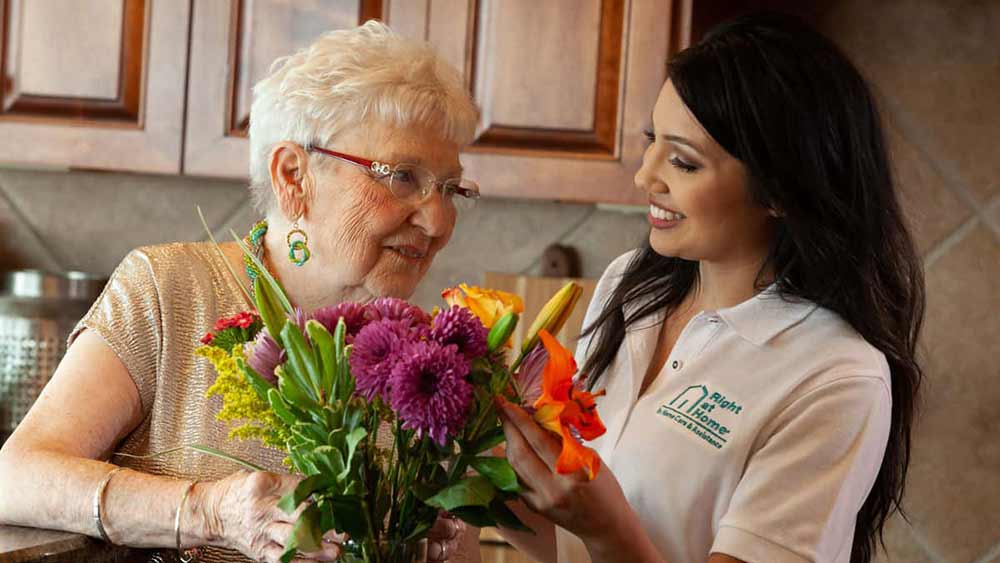

Neuropsychology of Dementia and Alzheimer’s
If you were to ask Carol Gonzalez-Sheak about regions of the brain and how each part works, she would methodically walk you through the cerebral lobes and the hippocampus and correctly pronounce “medulla oblongata.” With a Ph.D. in neuropsychology, the study of how the biology of the brain affects behavior, Carol has long been intrigued by human biology and an interdisciplinary approach to how our brain’s health affects our daily lives.
As the owner of the San Jose, Calif., Right at Home office, Carol sees how changes to neurons in the brain affect many of her clients, especially those with Alzheimer’s and other dementias. After her neuropsychology doctoral work and a nearly 30-year career with medical device and pharmaceutical companies, Carol transitioned to Right at Home in March 2015 and feels she has come full circle with her training in understanding the brain and behavior and bringing this passion to helping her clients with cognitive impairment.
“It’s important to understand that the word ‘dementia’ is a very broad-based umbrella that means a person has cognitive changes or decline that impacts their ability to pursue their activities of daily living,” Carol explains. “With these individuals, we need to focus not just on their memory loss and confusion, but also on other types of changes, such as personality changes, depression, anxiety, anger—the non-cognitive changes of dementia that are not strictly related to thinking and reasoning, as much as emotional and perceptual changes that take place.”
Non-Cognitive Changes With Dementia
The Alzheimer’s Association reports, “While the memory and thinking symptoms associated with the disease are the most well known, it is the behavioral and psychological symptoms of dementia (BPSD)—agitation, anxiety, apathy, depression, wandering, hallucinations, insomnia, incontinence, disinhibition—that often cause the greatest caregiving challenges and are the leading causes for placement in assisted living or nursing homes. Left untreated, these symptoms can accelerate decline and reduce quality of life.”
With her Alzheimer’s and other dementia clients, Carol sees firsthand how changes in brain function play out in the everyday decisions and actions of her clients.
“Most newly diagnosed individuals experience a high level of anxiety, and that may be due to their awareness of their condition or seeing things that they can no longer do,” Carol says. “Their sensitivity to or threshold for anxiety changes. You may see other changes in eating patterns, ambulation and even facial expressions—like the way they laugh. These are indicative of changes in personality.”
Because of the label or stigma of Alzheimer’s and other dementias, people can feel awkward and embarrassed when they start to notice how the disease changes them. This often leads to withdrawal from activities with family and friends. “There’s a lot of loneliness and isolation that takes place with dementia,” Carol adds. “Social isolation is probably one of the biggest sources of anxiety for those with dementia. People are afraid to participate in large group conversations because they can’t keep up, so that may increase anxiety and release stress hormones from the adrenal gland that can affect cognitive functioning.”
Carol notes that visual and auditory changes are other non-cognitive symptoms that may accompany dementia. “If brain cells (neurons) at the back of the brain are affected, visual perception is changed,” Carol says. “The person can be looking at an object and not really perceive or recognize it as well as most of us do.”
Although less-common non-cognitive symptoms, fear and paranoia can leave dementia individuals thinking the neighbors are talking about them, or move them to distrust others in general. “I’ve seen clients with dementia paranoia send caregivers home,” Carol shares. “‘I don’t want anybody in my house! What are you doing in my house?’ That happens quite often and you have to work with their anxiety.”
Sleep patterns also change for Alzheimer’s and dementia patients, often long before a person is diagnosed with a cognitive disorder. “Sleep pattern changes are based on the biology of the brain,” Carol says. “The $64-million question is what goes first—the environmental changes that impact the brain or biological changes affecting how we interact with the environment? Those changes can begin years before they are noticeable.”
Help and Support for Family Caregivers of Dementia Patients
With proper treatment, many people with dementia are prescribed anti-anxiety and other medications to help ease their non-cognitive symptoms. Carol also stresses consistency of care and family support for cognitive clients. “Change is difficult for older people generally anyway, but change for someone who has dementia is extremely difficult,” she explains.
For dementia individuals, any activity that involves a sequence of events can be challenging, such as bathing in which the person holds a washcloth, wets it, adds soap and applies the washcloth to the body. This is why as dementia progresses, caregivers are needed to help with personal hygiene and other tasks that were once routine.
Loved ones with dementia are not the only ones impacted by the intensity and progression of dementia. “The symptoms can definitely affect caregivers,” Carol stresses. “Caregivers burn out easily and they need respite care. They also need to understand that these symptoms are part of the disease and that the person with dementia still retains many abilities.”
Carol’s home care agency is certified in Right at Home’s approach to dementia and cognitive support, which is designed to undergird care clients experiencing cognitive change. The program employs the tenets of Carol’s field of neuropsychology to help recognize the behaviors and abilities of each individual cognitive care client and empower each person to still use those abilities.
“Dementia does affect so much of emotional functioning, too,” Carol adds. “If we can key on the activities that are still pleasurable to the care individual—having a bowl of ice cream, going for a walk and enjoying fresh air, viewing beautiful art, enjoying music and dance—we can bring out so much of what’s left of a person’s abilities.”
Caring for and engaging with loved ones experiencing cognitive change requires tremendous patience and understanding of the array of symptoms beyond loss of memory and cognition.
“It takes a village for one family caregiver, individual or spouse to not be burdened with all the care needs for someone who has dementia,” Carol adds. “It can be professional help, support groups or organizations that focus on Alzheimer’s and other dementia.”







